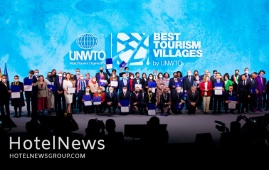
The best examples of villages embracing tourism to provide opportunity and drive sustainable development have been celebrated at the World Tourism Organization (UNWTO) General Assembly in Madrid. The Best Tourism Villages by UNWTO initiative was launched to advance the role of tourism in safeguarding rural villages, along with their landscapes, natural and cultural diversity, and their local values and activities, including local gastronomy. A total of 44 villages from 32 countries across the five world regions were granted the recognition in 2021. All of them stand out for their natural and cultural resources as well as for their innovative and transformative actions and commitment to the development of tourism in line with the Sustainable Development Goals (SDGs). The villages were evaluated by an independent Advisory Board based on a set of criteria covering nine areas: - Cultural and Natural Resources - Promotion and Conservation of Cultural Resources - Economic Sustainability - Social Sustainability - Environmental Sustainability - Tourism Potential and Development and Value Chain Integration - Governance and Prioritization of Tourism - Infrastructure and Connectivity - Health, Safety and Security All of the 44 chosen villages scored a total of 80 or more points or more out of a possible 100. Tourism as a driver of rural development and inclusion “Tourism can be a driver of social cohesion and inclusion by promoting a fairer distribution of benefits throughout the territory and empowering local communities,” says UNWTO Secretary-General Zurab Pololikashvili. “This initiative recognizes those villages committed to making tourism a strong driver of their development and wellbeing”. The Best Tourism Villages by UNWTO initiative includes three pillars: The ‘Best Tourism Villages by UNWTO’: Recognizes villages which are an outstanding example of a rural tourism destination with recognized cultural and natural assets, that preserve and promote rural and community-based values, products and lifestyle and have a clear commitment to innovation and sustainability in all its aspects – economic, social and environmental. The ‘Best Tourism Villages by UNWTO’ Upgrade Programme: The Upgrade programme will benefit a number of villages that do not fully meet the criteria to receive the recognition. These villages will receive support from UNWTO and its Partners in improving elements of the areas identified as gaps in the evaluation process. The ‘Best Tourism Villages by UNWTO’ Network: The Network will provide a space for exchanging experiences and good practices, learnings, and opportunities. It will include representatives of the villages recognized as the ‘Best Tourism Village by UNWTO’ , the villages participating in the Upgrade Programme, as well as experts, public and private sector partners engaged in the promotion of tourism for rural development. A total 174 villages were proposed by 75 UNWTO Member States (each Member State could present a maximum of three villages) for the 2021 pilot initiative. Among which 44 were recognized as Best Tourism Villages by UNWTO. Another 20 villages will enter the Upgrade Programme of the Initiative. All 64 villages enter to make part of the UNWTO Best Tourism Villages Network. The next edition will open in February 2022. List of Best Tourism Villages by UNWTO 2021: Bekhovo, Russian Federation Bkassine, Lebanon Bojo, Philippineshe Caspalá, Argentina Castelo Rodrigo, Portugal Cuetzalan del Progreso, Mexico Cumeada, Portugal Gruyères, Switzerland Batu Puteh , Malaysia Kaunertal, Austria Le Morne, Mauritius Lekunberri, Spain Maní, Mexico Misfat Al Abriyeen, Oman Miyama, Japan Mokra Gora, Serbia Morella, Spain Mustafapaşa, Turkey Nglanggeran, Indonesia Niseko, Japan Nkotsi Village, Rwanda Old Grand Port, Mauritius Olergesailie, Kenya Ollantaytambo, Peru Pano Lefkara, Cyprus Pica, Chile Pochampally, India Puerto Williams, Chile Radovljica, Slovenia Rijal Alma'a, Kingdom of Saudi Arabia Testo Alto, Brazil Saas Fee, Switzerland San Cosme y Damián, Paraguay San Ginesio, Italy Sidi Kaouki, Morocco Solčava, Slovenia Soufli, Greece Taraklı, Turkey The Purple Island, Republic of Korea Ungok Village, Republic of Korea Valposchiavo, Switzerland Wonchi, Ethiopia Xidi, China Yucun, China Additionally, UNWTO will work with the following villages participating in the Upgrade Programme: Ordino, Andorra Khinalig, Azerbaijan Koprivshtitsa, Bulgaria Kaštelir Labinci, Croatia Agros, Cyprus Fuwah, Egypt Western Samos, Greece Hollókő, Hungary Biei, Japan Capulálpam de Méndez, Mexico Godinje, Montenegro Gornja Lastva, Montenegro Oukaimeden, Morocco Barangay Tenani, Philippines Gasura, Rwanda Gostilje, Serbia Gorenja Vas, Slovenia Cantavieja, Spain Bo Suak, Thailand Ruboni, Uganda
Create: Dec 5, 2021 Edit: Dec 5, 2021 International News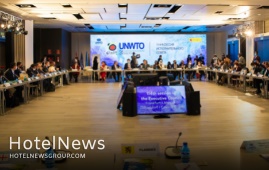
Tourism leaders from every global region have arrived in Madrid for the 24th Session of the UNWTO General Assembly. Ministers of Tourism will be joined by representatives of international organizations and from across the private sector for the first truly global tourism meeting to be held since the start of the pandemic, with innovation, education and investments high on the agenda. In all, more than 1,000 participants, representing 135 countries and including 84 Ministers and Vice-Ministers of Tourism will attend the most important meeting of the United Nations specialized agency for tourism. UNWTO Secretary-General Zurab Pololikashvili said: “Guided by UNWTO, global tourism is facing up to the challenges of today while looking to the opportunities of tomorrow. The UNWTO General Assembly shows the sector’s determination to restart, lead recovery and be a central pillar of sustainable development and climate action.” Towards an International Code for the Protection of Tourists UNWTO opened the General Assembly with an Induction Session for the International Code for the Protection of Tourists. Launched in response to the drop in consumer confidence caused by the pandemic, the landmark legal code will provide minimum standards and consumer rights for tourists in emergency situations. It was developed in collaboration with 98 Member States and Associate Members as well as 5 non-member States international organizations and leading private sector stakeholders. Once adopted by the UNWTO General Assembly, the Code will be presented to the United Nations General Assembly in 2022 with the aim of making it a Resolution. Affiliate Members Meet to Reform and Restart Held within the framework of the General Assembly, UNWTO’s Affiliate Members met today for their 43rd annual Plenary Session. Made up of businesses and destinations, as well as representatives from civil society and academic, UNWTO counts on more than 500 Affiliates to transform tourism policy into action. In Madrid, participants were given an overview of UNWTO’s crisis response, with the Destination Tracker developed by in partnership with the International Air Transport Association (IATA) presented as an example of effective public-private partnerships. At the same time, delegates approved the proposed Reform of the Legal Framework for UNWTO Affiliate Membership, paving the way for more effective collaboration Executive Council Endorses Key Initiatives Ahead of the official opening of the General Assembly, UNWTO convened its Executive Council for a 114th session. The Council, which serves as the governing board of UNWTO, met to hear Secretary-General Pololikashvili present his report on the work done since the 113th session, also held in Madrid at the start of the year. The Members of the Executive Council agreed to the iimplementation of the General Programme of Work for 2020-2021 and for 2022-2023. Members also endorsed several key UNWTO initiatives, notably the UNWTO Recommendations on Tourism for Rural Development, the Best Tourism Villages project and the Global Tourism Plastics Initiative. Also meeting in Madrid, the UNWTO Committees on Tourism and Sustainability, on Tourism and Competitiveness and on Tourism Online Education, brought together experts to explore ways to advance the Organization’s Programme of work around key priority areas.
Create: Dec 1, 2021 Edit: Dec 1, 2021 International News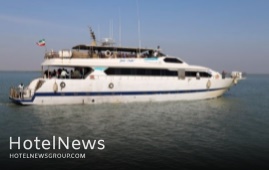
A carefully planned strategy is needed to promote maritime tourism on Iran’s northern and southern coasts, the deputy tourism minister has announced. The country should focus on developing its maritime tourism sector while preparing upstream documents, Ali-Asghar Shalbafian said, ILNA reported on Monday. Operational measures should be taken with the aim of increasing the motivation of private investors, the official added. “By partnering with the private sector in the maritime industry, and promoting the implementation of executive measures, even if they are small and infrequent, we will increase motivation to work in the field,” he explained. In order for maritime tourism to flourish, there has to be interaction and coordination at all levels of government and the private sector, he noted. Coastal and maritime tourism Over the past couple of years, the Islamic Republic has made various efforts to exploit maritime tourism potential by developing hospitality infrastructures, diversifying sea routes, and drawing private sector investors along its vast southern coasts. Prosperous maritime tourism could help the county to meet its ambitious target of attracting 20 million annual tourists by 2025. It also keeps an eye on tourism developments in the Caspian Sea in the north. Back in February, the Ministry of Tourism and the Ministry of Transport and Urban Development signed a memorandum of understanding (MOU) to develop maritime tourism and make the best use of its potential in the southern and northern coasts of the country. Promoting the culture of using the sea as a tool to increase social vitality, development of coastal activities in the form of environmentally-friendly plans and programs, and creating the necessary grounds for cooperation and exchange of knowledge and information was also among the topics of the agreement.
Create: Nov 30, 2021 Edit: Nov 30, 2021 Regional News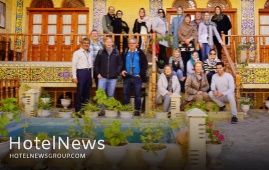
In addition to a mandatory negative PCR test certificate, international travelers visiting Iran should buy coronavirus insurance, a tourism official announced on Thursday. “Foreign tourists must buy coronavirus insurance from authorized companies when entering the country, and if they suffer from the pandemic in Iran, they will be provided with a place and treatment for 14 days,” Esmaeil Barat said, IRNA reported. In addition to providing proof of vaccination or a negative PCR, inbound passengers must have coronavirus insurance, which differs from the routine insurance coverage purchased by all tourists before the coronavirus era, the official explained. Home to countless cultural and natural travel destinations, Iran achieved good growth in attracting foreign tourists over the past couple of years but the epidemic shut down its tourism, as in many other countries, Barat said. Iranian Tour Operators Director Ebrahim Pourfaraj said earlier this month that the restoration of tourism flow to the country is very important for Iranian tour operators and travel insiders. “At the moment, we are not thinking about revenues, but we are looking for the beginning of the tourist flow to the country and renew our links [with international fellows],” Pourfaraj said. His comments came after months of steep recession triggered by massive coronavirus restrictions which led many travel insiders, hoteliers, and tour operators towards bankruptcy, unemployment, debts, and the prospects of not being competitive on the international level. As mentioned by Pourfaraj, Iran has made its best to maintain contact with global tourism markets and companies that worked with Iran in the past, especially since virtual communication and meetings have thrived. “Following the resumption of the tourist visa, visitors from Russia and France have traveled to Iran and we are currently expecting a smaller number of tourists in Iran due to the current situation in the world,” he explained. Last November, the World Tourism Organization announced that international tourist arrivals to Iran plunged 72% during the first eight months of 2020 when compared to 2019, highlighting the severe impact of COVID-19 as the main factor. Even before the pandemic, Iran’s tourism was already grappling with some challenges, on top of those Western “media propaganda” aimed at scaring potential travelers away from the Islamic Republic. Some experts believe Iran is still somehow “unknown” for many potential travelers due to such a “media war”. They, however, consider bright prospects for the tourism sector of the country if it vigorously pursues comprehensive strategies to counter U.S.-led propaganda and strict sanctions, yet does its best to loosen tough travel regulations. Iran is potentially a booming destination for travelers seeking cultural attractions, breathtaking sceneries, and numerous UNESCO-registered sites. Under the 2025 Tourism Vision Plan, Iran aims to increase the number of tourist arrivals from 4.8 million in 2014 to 20 million in 2025.
Create: Nov 27, 2021 Edit: Nov 27, 2021 Regional News
The Foreign Ministry Director-General for West Asia has said that Iran considers easing visa rules for Afghan nationals. "Facilitation of the legal entry of Afghan citizens into Iran is the best way to combat illegal entry, human trafficking, and many norm-breaking behaviors," ISNA quoted Seyyed Rasoul Mousavi as saying on Wednesday. "Today (Tuesday), only in Herat, 1509 people [Afghans] were granted entry visas to Iran," the top diplomat tweeted. Recently, Seyyed Hassan Mortazavi, Iran’s Deputy Ambassador to Afghanistan, said that twelve aid cargoes carrying Iranian aid have been delivered to the people of Afghanistan. He noted that the Leader of the Islamic Revolution has emphasized the continuation of humanitarian assistance to “the oppressed” people of Afghanistan. Mortazavi also noted that the humanitarian aid from the Islamic Republic to the people of Afghanistan has been continuing over the past three months, during the time that Afghanistan has been the scene of drastic political changes.
Create: Nov 27, 2021 Edit: Nov 27, 2021 Regional News
UNWTO and Instagram have joined forces to produce a ‘Tourism Recovery Playbook ’, and so help destinations and business harness the power of digital and visual storytelling to reach new audiences and return to growth. This first ever partnership with Instagram forms part of UNWTO’s wider shift towards harnessing the power of digital innovation to drive the restart of tourism, especially local and sustainable tourism. It also represents Instagram’s recognition of tourism as a leading provider of livelihoods and global opportunity, welcoming UNWTO as partners in a first structured effort to use the platform as a tool to help kickstart the sector’s recovery. The partnership was announced against the backdrop of World Travel Market in London, the leading tourism trade fair where UNWTO brings together political and business leaders, and after of UNWTO amplifying tourism’s unified response to the climate emergency at the UN Climate Change Conference COP26 in Glasgow. Expert insights into storytelling for tourism UNWTO’s partnership with Instagram will show that safe, responsible travel is possible, and to illustrate how just one tourist can make a big difference The Recovery Playbook provides insights into making the most of the platform, from producing Reels to showcase destinations to using Guides and other tools to illustrate how the sector is ready to welcome tourists back safely and responsibly. It also explores the best ways to encourage renewed local travel, while raising environmental awareness. Alongside best practice and tips on effective tourism storytelling, the publication also features case studies of small businesses and destinations have successfully used Instagram to connect with key audiences during the pandemic. In his foreword to the Tourism Recovery Playbook, UNWTO Secretary-General Zurab Pololikashvili says: “As parts of the world begin cautiously opening up again, now is the time to be creative in showing why tourism matters – for individuals, for our communities and for our planet. UNWTO’s partnership with Instagram will show that safe, responsible travel is possible, and to illustrate how just one tourist can make a big difference.” “We know countless small businesses and destinations are ready to welcome the world back to their doorsteps,” said Asya Kislyuk, Policy Programs Manager at Instagram. “Instagram is proud to provide a playbook for people to help make it happen when the time is right – safely and sustainably.” Advancing UNWTO’s digital shift This first collaboration with Instagram builds on UNWTO’s ongoing turn towards greater use of digital tools and visual storytelling to make clear the relevance and importance of tourism to economies, societies, and planet. The Organization has accelerated this shift in its efforts to scale up Member support and enable them to better seize the advantages of digital communications platforms.
Create: Nov 23, 2021 Edit: Nov 23, 2021 International News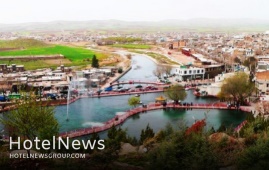
Nine tourism-related projects, which are planned to be carried out across the western province of Kermanshah are estimated to generate 135 jobs upon their completion, the provincial tourism chief has announced. The projects will be implemented in the cities of Kermanshah, Javanrud, Harsin, and Islamabad-e-Gharb, Jabbar Gohari said on Tuesday. A budget of 2.4 trillion rials ($58.4 million at the official exchange rate of 42,000 rials per dollar) will be channeled into the projects, which include accommodation centers, tourist complexes, traditional restaurants, and hotel hospitals, the official explained. Kermanshah embraces a variety of awe-inspiring historical sites, of which Bisotun and Taq-e Bostan are both on the UNESCO World Heritage list. Inscribed into the base of a towering cliff, Taq-e Bostan comprises extraordinary Sassanian bas-reliefs of ancient victorious kings divide opinions. Late afternoon is the best time to visit, as the cliff turns a brilliant orange in the setting sun, which then dies poetically on the far side of the duck pond. Bisotun is a patchwork of immense yet impressive life-size carvings depicting King Darius I and several other figures. UNESCO has it that Bisotun bears outstanding testimony to the important interchange of human values on the development of monumental art and writing, reflecting ancient traditions in monumental bas-reliefs.
Create: Nov 20, 2021 Edit: Nov 20, 2021 Regional News
Cycas Hospitality, the award-winning pan-European operator, has signed a deal to operate London Town Group’s portfolio of upscale boutique hotels in the UK capital. The London Town Group of Companies, founded by Koolesh Shah, is one of the UK’s leading, privately-held real estate and energy investment companies. The agreement sees Cycas welcome its first two Mercure-branded hotels – part of Accor – to its portfolio. While the 72-room Mercure London Hyde Park – set within a Grade II listed building – recently completed a multi-million-pound refurbishment, the 86-room Mercure London Paddington is scheduled to start a fully renovation programme next year. As part of the extensive works, the hotel will upgrade its ground floor food and beverage facilities and transform its top floor into a rooftop bar.As Cycas’s seventh IHG-branded property, the 64-room Hotel Indigo London Paddington becomes its first Hotel Indigo in London and joins Hotel Indigo Dundee as its second in the UK. All three properties offer a wide range of dining options, meetings facilities and state-of-the-art fitness centres, all just a short walk from Hyde Park and Paddington Station, whose access will be further boosted with next year’s opening of Crossrail and the Elizabeth Line. Cycas has appointed Tanja Furby as Cluster General Manager for the three London hotels. A seasoned operator who has worked across a wide range of leading hospitality brands, Tanja’s commercial skills, leadership and local knowledge will help Cycas maximise each property’s customer offering. Koolesh Shah, Founder of London Town Group, said “As our business diversifies and grows, I felt now was the time to bring on board a recognised industry leader in hotel operations to partner on the transformation journey of our hotels. “We’ve always prided ourselves on our collection of leading branded-boutique hotels, and we’re confident that Cycas’s track-record in delivering the highest hospitality standards will ensure we can continue to give our guests the best possible experience.” Matt Luscombe, Chief Executive Officer at Cycas Hospitality, said: “I’ve known and admired Koolesh and his team for many years, since he opened the first Hotel Indigo outside of North America in 2009. Over the last decade, London Town Group has been synonymous with commercial and operational excellence. “With their central locations and exceptional transport links, these three hotels are ideally positioned to capitalise on the recovery in business and leisure travel. We’re proud and excited to begin this partnership together. The deal follows continued expansion for Cycas Hospitality, which has now opened or taken over 17 hotels in 12 months, despite the challenges posed by the Covid-19 pandemic,
Create: Oct 31, 2021 Edit: Oct 31, 2021 International News
A selection of craftspeople, travel insiders, and exhibitors from Sistan-Baluchestan are getting prepared to promote the southeastern Iranian province at the Expo 2020 Dubai, which is currently underway in the UAE. "[A selection of exhibitors from] Sistan-Baluchestan province will be attending the expo in Dubai, in [the month of] Bahman to present a variety of programs," the provincial tourism chief Alireza Jalalzaei said on Tuesday. A wide range of Sistan-Baluchestan's ancient handicrafts, live performances, and workshops, and introductions to cultural and natural destinations, and the archaeological sites is expected to take the center stage at the Iran pavilion during the event, the official explained. Visitors to the pavilion are offered to discover epitomes of the ancient land in terms of rituals, handicrafts, cultural heritage, and travel destinations. It also reveals more about medical tourism, novel startups, and off-the-beaten tracks. Many countries and companies are also looking to the expo - the first major global event open to visitors since the coronavirus pandemic - to boost trade and investment. According to organizers, the Expo, an exhibition of culture, technology, and architecture under the banner “Connecting Minds and Creating the Future”, is expected to be a demonstration of ingenuity, and a place where global challenges such as climate change, conflict, and economic growth can be addressed together. Iran expects to reap a bonanza from its numerous tourist spots such as bazaars, museums, mosques, bridges, bathhouses, madrasas, mausoleums, churches, towers, and mansions, of which 26 are inscribed on the UNESCO World Heritage list. The collective province -- Sistan in the north and Baluchestan in the south -- accounts for one of the driest regions of Iran with a slight increase in rainfall from east to west, and an obvious rise in humidity in the coastal regions. In ancient times, the region was a crossword of the Indus Valley and the Babylonian civilizations. The province possesses special significance because of being located in a strategic and transit location, especially Chabahar which is the only ocean port in Iran and the best and easiest access route of the middle Asian countries to free waters. The vast province is home to several distinctive archaeological sites and natural attractions, including two UNESCO World Heritage sites, namely Shahr-e-Soukhteh (Burnt City) and Lut desert.
Create: Oct 31, 2021 Edit: Oct 31, 2021 Regional News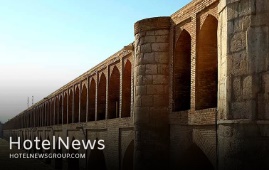
A selection of 200 “untold stories” about Isfahan is now available for you to re-discover the ancient city, which has long been nicknamed as “half the world”. Each story is narrated within a one-minute video clip in different languages to make culture lovers and avid travelers familiar with the off-the-beaten tracks, lesser-known destinations, souvenirs, foods, traditions, rituals, cultural heritage, handicrafts, and above all the hospitable people of Isfahan. Directed by Iranian globetrotter and researcher Majid Erfanian, the clips have been produced jointly by Isfahan Chamber of Commerce, Industries, Mines and Agriculture (ICCIMA), and the private company of Rah Abrisham Iranian Zamin. 100 of the videos, containing 100 fascinating stories, had already been uploaded to social media outlets, while the others were unveiled in an official ceremony hosted by the ICCIMA on Saturday evening. The event was attended by the deputy tourism minister Ali-Asghar Shalbafian, Isfahan governor-general Seyyed Reza Mortazavi, the mayor of Isfahan Ali Qasemzadeh, and Alireza Salarian, the head of Representative Office of Ministry of Foreign Affairs in Isfahan as well as a host of travel insiders, reporters, and journalists who discussed ways to jumpstart tourism. Erfanian stressed the need for greater public awareness about the cultural heritage of the ancient land, saying the “untold stories” are produced for that purpose. “Redefining destinations has rarely happened in the field of traveling [in the country], and now the city [of Isfahan] is a forerunner of such a trend to express its tourism brand in a new way,” he said. Talking about the clips, Erfanian said” “In these multi-language videos, we have tried to put the spotlight on inaccessible or lesser-known historical sites, foods, intangible heritage, people…. characters, craftsmen and figures who have played a role in shaping the identity of Isfahan.” “Sister cities of Isfahan, the diversity of religions, and intangible heritage are amongst other elements we have addressed in the videos,” he added. In an address to the unveiling ceremony, the deputy tourism minister used the context of modern architecture to discuss ways to highlight contemporary Isfahan shoulder to shoulder with its historical core. “We see in the videos that they mostly bring centuries-old architecture and culture into focus, however, we should consider casting a new light on the modern side of Isfahan as well.” “In the production of extra videos, newer ideas may be added to improve the quality of the work,” Shalbafian added. The governor-general of Isfahan reminded the attendees of the unique feature of stories and narratives, in general, to preserve cultural heritage for the coming generations. “In all over the world, paying attention to stories and narratives is of special importance for the development of tourism….. and we have many of such stories that have been forgotten in the course of history.” What you have done in this project is to revive such stories and distinct identities that if ignored, will lead to their disappearance, Mortazavi explained. Ali Karbasizadeh, a senior advisor to the ICCIMA, expressed the need for paying much more attention to the tourism industry, content production, training of all stakeholders and activists, conducting relevant studies, productive investments, tourism startups, and further cooperation with other provinces to develop the tourism paradigm of the country. Furthermore, Karbasizadeh discussed the advantage of adequate official holidays in Iran, saying the number of national holidays in Iran, which has a pivotal role in domestic tourism, is currently insufficient in comparison to many other countries. “If this issue is not addressed and solved, our efforts in other areas would not have desired results.” Salarian for his part noted that making one-minute videos of Isfahan is a good fit. “When we sent [some of the earliest] clips of the series to our embassies in various countries, they expressed a wish to have them translated into other languages as well….Now I see that this has happened.” “Even the municipality [of Isfahan] has produced a series of professional five-minute videos in ten languages that are well received by the audiences.” “Isfahan is one of the important destinations for the high-ranking Iranian officials and visiting officials from other countries. Therefore, it has a unique stance in the field of tourism that should be taken into account,” the senior diplomat explained. Finally, the mayor of Isfahan outlined the importance of storytelling for the time being and in various fields including tourism, saying: “Story [and storytelling] still works in the present day even in psychiatric discussions, story therapy is a growing concept.” “We are ready to expand cooperation and join hands with other activists in the realm of tourism because Isfahan has enormous potential to become a major destination for international travelers,” Qasemzadeh said. Half the world? Soaked in a rich history, Isfahan was once a crossroad of international trade and diplomacy in Iran and now it is one of Iran’s top tourist destinations for good reasons. It is filled with many architectural wonders such as unmatched Islamic buildings, bazaars, museums, Persian gardens, and tree-lined boulevards. It's a city for walking, getting lost in its mazing bazaars, dozing in beautiful gardens, and meeting people. Isfahan is renowned not only for the abundance of great historical bridges but also for its ‘life-giving river’, the Zayandeh-Rood, which has long bestowed the city an original beauty and fertility. Isfahan has long been nicknamed as Nesf-e-Jahan which is translated into “half the world”; meaning seeing it is relevant to see half the world. In its heyday, it was also one of the largest cities in the region with a population of nearly one million. The cool blue tiles of Isfahan's Islamic buildings, and the city's majestic bridges, contrast perfectly with the encircling hot, dry Iranian countryside. The huge Imam Square, best known as Naghsh-e Jahan Sq. (literary meaning “Image of the World”), is one of the largest in the world (500m by 160m), and a majestic example of town planning. Constructed in the early 17th century, the UNESCO-registered square is punctuated with the most interesting sights in Isfahan. It was laid out under the reign of the Safavid ruler, Shah Abbas the Great, to signal the importance of Isfahan as the capital of his powerful empire. It is hemmed on four sides by magnificent buildings: to the east, the Sheikh Lotfollah Mosque; to the west, the palace of Ali Qapu; to the north, the portico of Qeysarieh; and to the south, the eminent Imam Mosque. “The square was at the heart of the Safavid capital’s culture, economy, religion, social power, government, and politics. Its vast sandy esplanade was used for celebrations, promenades, and public executions, for playing polo and for assembling troops,” according to the UNESCO website. Right at the northern limit of the Imam Square, one will find “Qeysarieh Gate”, which leads to the unique and unforgettable “Grand Bazaar of Isfahan”. This vaulted marketplace is one of the largest and most labyrinthine bazaars in the country. Shops offering handicrafts, souvenirs, jewelry, silverware, traditional ceramics, and authentic Persian carpets. Modern Isfahan is now home to some heavy industry, including steel factories and a nuclear facility on its outskirts, however, its inner core wants to be preserved as a priceless gem. The city is also home to a gigantic, professional, and state-of-the-art healthcare city, which is a major destination in the realm of medical tourism. Unknown destination Even before the pandemic, Iran’s tourism was already grappling with some challenges, on top of those Western “media propaganda” aimed at scaring potential travelers away from the Islamic Republic. Some experts believe Iran is still somehow “unknown” for many potential travelers due to such a “media war”. They, however, consider bright prospects for the tourism sector of the country if it vigorously pursues comprehensive strategies to counter U.S.-led propaganda and strict sanctions, yet does its best to loosen tough travel regulations.
Create: Oct 26, 2021 Edit: Oct 27, 2021 Regional News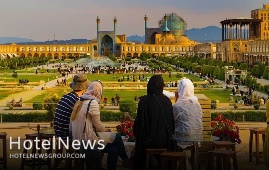
Iran's tourism industry has made every effort to stand on its own two feet despite the considerable damage caused by the virus pandemic. A country’s prosperity depends on its economic and social development, and the tourism industry plays a key role in achieving this goal, the president of Iran’s University of Science and Culture Seyyed Saied Hashemi has said. He made the remarks during the two-day symposium of One Hundred Years of Iranian Tourism, which came to an end on Wednesday. After the coronavirus crises, tourism can hopefully be a positive influence on people’s lives, he added. Many nations owe their social and economic progress to [their] tourism [industries], so it is hoped that this symposium and such events can provide a meaningful solution for the new [Iranian] government, he noted. Due to the lack of adequate coordination and cooperation between scientific institutions on the one hand and policy-makers on the other hand, the country may have faced many problems in the tourism industry during this century, and that is why it could not get enough benefit from the tourism despite having good potential, he mentioned. Another speaker at the event, Mohammad Hossein Imani Khoshkhu, the head of the industrial park for science also said there is no connection between tourism sectors in the country, while all organizations and devices must help each other to develop tourism. For instance, currently, medical tourism does not exist in the country, but there are international patients and the medical tourism activists have now become taxi drivers at airports instead of activists for related tourism, he added. Back in July, ISNA reported that Iran’s tourism industry has suffered a loss of some 320 trillion rials ($7.6 billion at the official exchange rate of 42,000 rials per dollar) since the outbreak of the coronavirus pandemic. The pandemic has also ruined more than 44,000 jobs in the once budding travel sector of the country, the report added. As a result of the outbreak of the coronavirus in Iran and the subsequent unemployment and financial losses, accommodation centers suffered the most. These statistics cover the period between February 2020 and the spring of 2021. Only months into the outbreak, Zarghami’s predecessor, Ali Asghar Mounesan, lamented that the number of foreign travelers to Iran was drastically plunged due to the pandemic. “Tourism of the country was growing before the corona [outbreak], its revenues reached $11.7 billion in 2019, which accounted for 2.8% of GDP, nearing the average share of tourism in the world GDP, which was 3.2 percent,” Mounesan said. He added 8.7 million foreign nationals visited Iran during the [Iranian] year (1398), adding that Iran was ranked as the second fastest-growing country in tourism based on data compiled by the World Tourism Organization. So far, panels of travel experts have mapped out new marketing strategies hoping the sector would get back on its feet once again. Earlier this year, the Head of the Iranian Tour Operators Association Ebrahim Pourfaraj asked the government to issue tourist visas for the international applicants who have been fully vaccinated against COVID-19. “The Ministry of Health and the National Headquarters for Coronavirus Control can at least agree that the international tourists who have received the [second dose of] coronavirus vaccine would be allowed to enter Iran.” The expert lamented that the continuation of such a trend would result in losing international tourist markets more than before. “Or at least they should make it clear so that we can respond appropriately to foreign companies and tourists to not to miss the international tourist markets more than before.” Iran is potentially a booming destination for travelers seeking cultural attractions, breathtaking sceneries, and numerous UNESCO-registered sites. Under the 2025 Tourism Vision Plan, Iran aims to increase the number of tourist arrivals from 4.8 million in 2014 to 20 million in 2025. Even before the pandemic, Iran’s tourism was already grappling with some challenges, on top of those Western “media propaganda” aimed at scaring potential travelers away from the Islamic Republic. Some experts believe Iran is still somehow “unknown” for many potential travelers due to such a “media war”. They, however, consider bright prospects for the tourism sector of the country if it vigorously pursues comprehensive strategies to counter U.S.-led propaganda and strict sanctions, yet does its best to loosen tough travel regulations.
Create: Oct 25, 2021 Edit: Oct 25, 2021 Regional News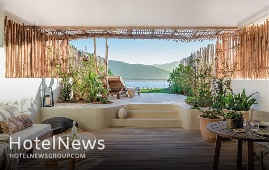
Welcome to our annual World’s Best Luxury Hotel Brands report. This is not just another World’s Best list. LTI – Luxury Travel Intelligence – has taken the past 12 months to apply the perfect assessment process: a rigorously defined algorithm that measures the performance and values of luxury hotel brands. This year, our algorithm has 131 touch points relevant to the luxury hotel sector. Each has its own weighted score value with a total maximum accumulative score of 4736. The touchpoints relate to overall brand performance, rather than the performance of individual properties. It is all about a brand’s ability to deliver: its passion, commitment, ethos and values, as well as the quality of its management and staff. Continuing investment and how well it is executed is also a major factor, particularly regarding new properties and the refurbishment of existing ones. This year’s results are reflected as percentages, with last year’s positions in brackets. 1. Six Senses 83.3% (1) 2. Mandarin Oriental 82.6% (5) 3. Auberge 81.8% (3) 4. Aman 81.4% (2) 5. Belmond 79.9% (4) 6. One&Only 77.0% (6) 7. Oetker Collection 75.7% New Entry 8. Four Seasons 74.1% (8) 9. Rosewood 73.5% (7) 10. Raffles 72.7% New Entry 11. Viceroy 72.2% New Entry 12. COMO 71.0% (10) Other brands that rated sufficiently to be monitored throughout the year are (in alphabetical order) Alila, Anantara, Banyan Tree, Dorchester Collection, Firmdale, Jumeirah, Leela, Oberoi, Park Hyatt, Peninsula, Ritz Carlton, Rocco Forte, Shangri-La, Soho House, St. Regis, Taj, The Luxury Collection. Brands that currently have less than ten properties (our minimum requirement) but rate highly when applying our algorithm are (in alphabetical order) Airelles, Althoff Collection, Bulgari, Capella, Cheval Blanc, Maybourne, Montage, Nikki Beach, Pendry, Soneva. About The World’s Best Luxury Brands ReportNo other organisation connects with the global luxury hotel industry as LTI does. Our researchers engage with everyone from CEOs of the brands we have rated to thousands of managements, staff and guests. This is all part of the process for creating our destination led reports for our members (affluent, discerning travellers) but it also allows us to utilise our findings to create this unique report. Every year the process starts again – the results from previous years have no bearing on the following year. This does inevitably lead to volatility in each year’s results (such as this year), but this is a dynamic sector and we want to reflect what is really happening out there. Six Senses: Worlds Best Luxury Hotel BrandWe continue to be very impressed with Six Senses. It has an authentic blend of wellness, sustainability, warm hospitality and crafted guested experiences. Also, its leadership is exemplary. The recent addition of Neil Palmer as Chief Operations Officer will bring boundless experience, energy and further integrity to the brand. New EntriesWe have been tracking Oetker Collection for several years while they have been building an exceptional portfolio of globally renowned hotels. We have been particularly impressed with the meticulously rebuilt of The Eden Rock in St Barths and their creation of The Woodward, a 26 room all-suite hotel on the shores of Lake Geneva, which opened in September. Raffles, with a new CEO at the helm, has been quietly creating a raft of impressive new properties across the globe. Viceroy has also shown great courage and commitment to building a global modern luxury hotel brand offering intuitive service, authentic experiences and provocative design. Covid-19 Impact Our algorithm has been suitably adjusted to accommodate the multitude of Covid- related challenges that luxury hotel operators have faced during 2020 and 2021. This also accommodates how brands are responding to a significant shift in Covid- driven demands from the luxury traveller.
Create: Oct 19, 2021 Edit: Oct 19, 2021 International News
